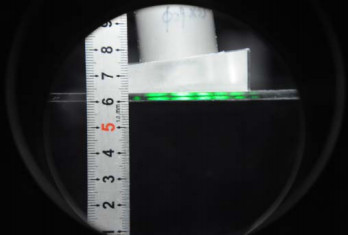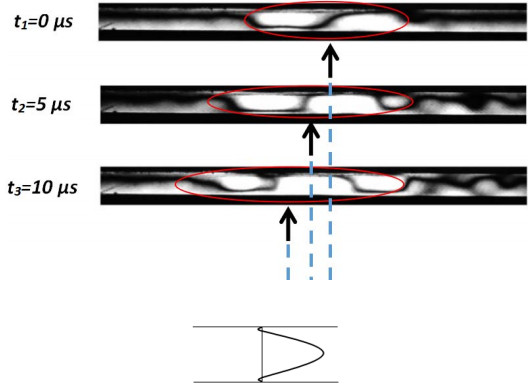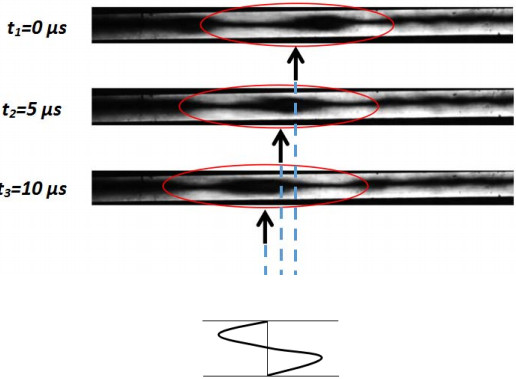In certain conditions, guided waves in plates and cylinders exhibit the backward propagation that group and phase velocities have opposite directions, which are called backward waves. Backward waves have received intense interests due to the fact that it might provide new ways to manipulate acoustic fields.
Backward waves might be used to control the acoustic energy flux. The existence of backward waves in acoustic waveguides is well established, but the direct visualization of the propagation of backward modes in plates has been rarely reported.
Currently, the common method to observe backward wave is to use the laser interferometer, but the detection area is limited to the surface of a waveguide. The dynamic photoelastic method is able to research the stress distributions inside transparent solids, thus it can be used to observe and measure backward waves in acoustic waveguides.
Photoelasticity is a method to determine the stress distribution in a material experimentally. The method is mostly used in cases where mathematical methods become quite cumbersome (difficult), which can provide a fairly accurate picture of stress distribution around discontinuities in materials.
Researchers from the Institute of Acoustics (IOA), the Chinese Academy of Sciences have recently used the dynamic photoelastic technique to measure backward wave motions in plates, in order to obtain a better understanding of propagation characteristics of backward waves.
In this research, both numerical calculations and the dynamic photoelastic method have been used to research the backward modes in plates.
The dispersion equation of Lamb modes in the glass plate has been numerically calculated to obtain phase and group velocities dispersion curves. The aims are to identify backward modes with negative group velocities and also to predict phase and group velocities of these modes.
More importantly, the dynamic photoelasticity, which is based on stress birefringence, has been used to catch the stress distributions of backward modes S2b and A3b at a given frequency. The propagation of backward modes has been visualized by adjusting the time delay between sound and light.
From Fig.1, it shows the wave front is set to spread to the right, i.e. the direction of the phase velocity is right. However, as shown in Fig.2, the wave package is moving to the left with time increasing, i.e. the direction of the group velocity is left. And the measured group velocity is 708±28m/s, which agrees well with the theoretical group velocity (750 m/s).
Similarly, in order to excite the A3b mode, the incidence angle of the transducer is 3.92° with fD = 5358Hz•m. The wave front is also set to spread to the right. As shown in Fig. 3, the wave flux goes to the left. Besides, the backward-propagation A3b mode has a group velocity of 450±17m/s which is comparable to theoretical prediction (509 m/s).
Research results show that the dynamic photoelastic visualization technique is a powerful experimental tool to realize some incredible phenomena in ultrasonic propagation and scattering.

Fig.1 Experimental image (Image by IOA)

Fig.2 the normal stress distribution of S2b mode, which is symmetric, propagating to the negative direction (Image by IOA)

Fig.3 the normal stress distribution of A3b at fD = 5358Hz•m, which is anti-symmetric, propagating to the negative direction (Image by IOA)
Reference:
HU Zhongtao, CUI Hanyin, AN Zhiwu, MAO Jie. Measurements of Backward Wave Propagation Using the Dynamic Photoelastic Technique. Proceedings of 2016 IEEE International Ultrasonics Symposium, Tours, France, September, 18-21, 2016.
Contact:
AN Zhiwu
State Key Laboratory of Acoustics, Institute of Acoustics, Chinese Academy of Sciences, 100190 Beijing, China
Email: anzhiwu@mail.ioa.ac.cn


